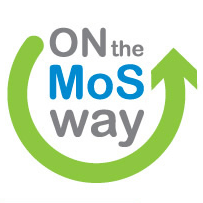Fujitsu Limited, Singapore Management University (SMU), and A*STAR’s Institute of High Performance Computing (IHPC) have teamed up on developing new technologies for vessel traffic management in the Port of Singapore, with the support of the Maritime and Port Authority of Singapore (MPA).
These predictive technologies will use artificial intelligence (AI) and big data analytics to optimize the management of Singapore’s port and surrounding waters, which sees an immense volume of seaborne trade and traffic, the partners said in a joint statement. The technologies will also be validated using real-world data to improve the forecasting of congestion and identification of potential collisions and other risk hotspots before they occur at sea.
The research and development for these new maritime technologies have been conducted under the guidance of the Urban Computing and Engineering Centre of Excellence (UCE CoE), a public-private partnership consisting of the Singapore’s Agency for Science, Technology and Research (A*STAR), SMU, and Fujitsu, that was established in 2014. The outcomes of the research, as well as the practical knowledge and experience gained through the project trials, will be integrated into Fujitsu’s future maritime solutions. As a result of the collaboration between Fujitsu, IHPC, and SMU, technologies which are being developed include prediction models, risk and hotspot calculation models and intelligent coordination models.
As explained, these technologies will eventually be integrated and test-bedded for their potential to enhance navigational safety, such as the ability to detect and recognize a near-miss risk prior to the event by combining short-term trajectory prediction with risk calculation. Another target is to forecast and mitigate the dynamically changing hotspot before it is generated by integrating long-term traffic forecasts, hotspot calculation, and intelligent coordination models.
“As Singapore develops future capabilities that will enhance our port operations, research and innovation will remain key to the maritime industry. As part of the recently launched Sea Transport Industry Transformation Map, MPA is supportive of collaborations among local Institutes of Higher Learning and technology companies to explore new technologies that will raise the standards of navigational safety within the Port of Singapore,” Capt. M Segar, Assistant Chief Executive (Operations), MPA, commented.
“Multi-agent technology has been used extensively in coordinating the movements of unmanned aerial vehicles and unmanned ground vehicles. In this project with MPA, SMU is breaking new grounds in research by proposing a next generation maritime traffic coordination technology that is akin to air traffic control, yet respecting major differences and constraints between air and sea navigation. With the advent of autonomous ships, this technology can potentially disrupt vessel traffic management to reduce human errors and improve navigational safety,” Professor Lau Hoong Chuin, SMU’s Lab Director and Lead Investigator of the UCE CoE, said.
Source:World Maritime News

